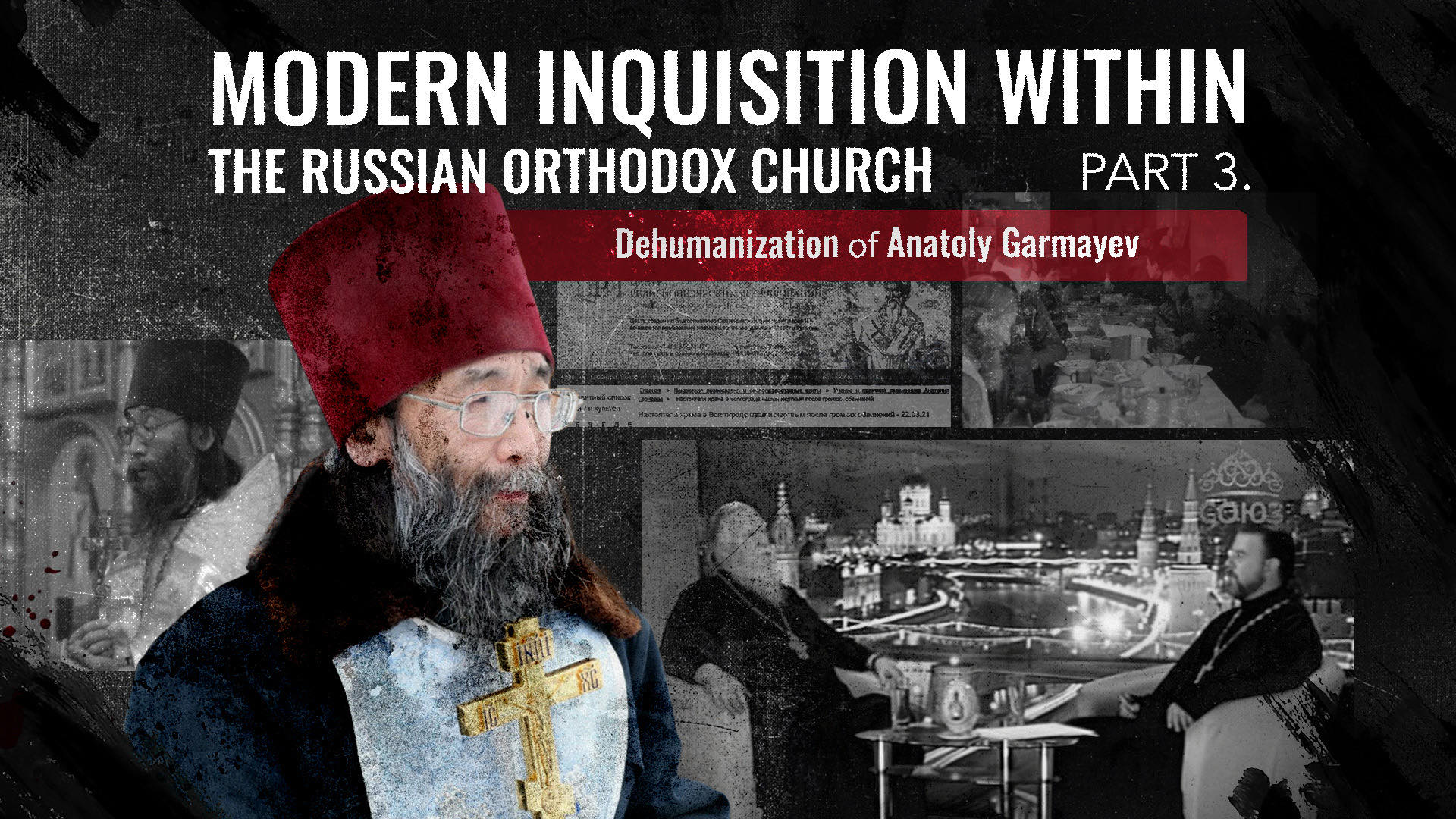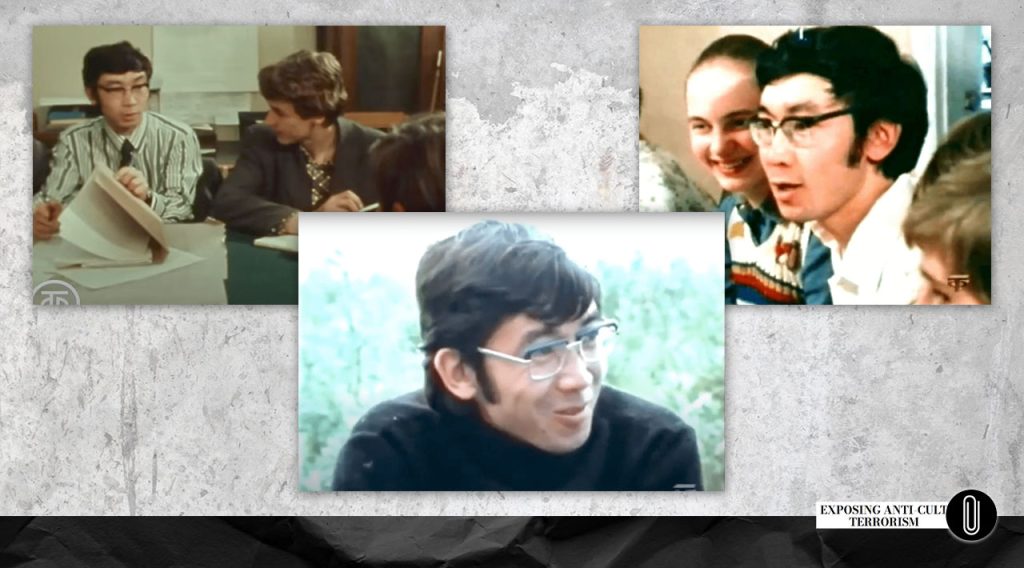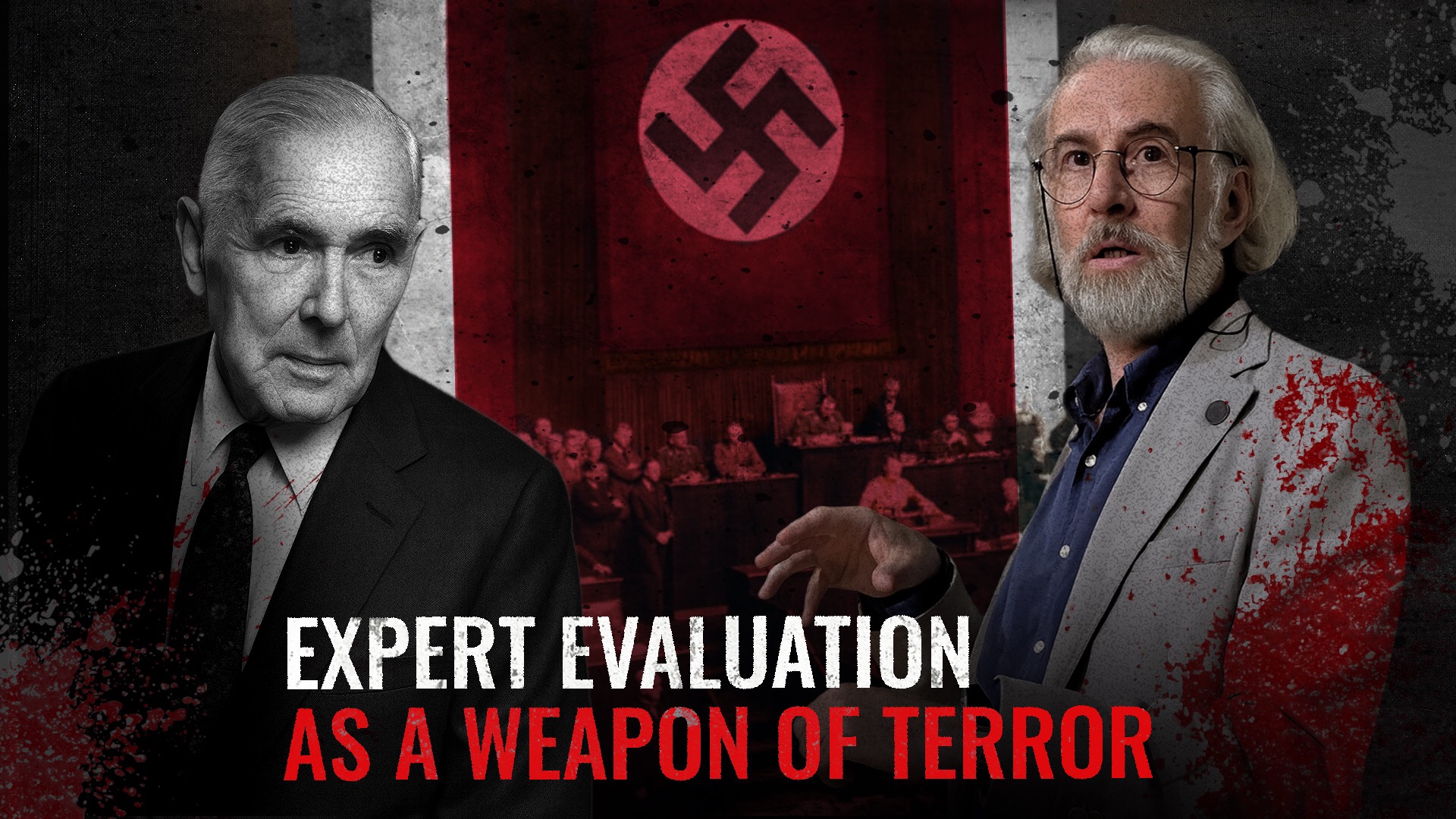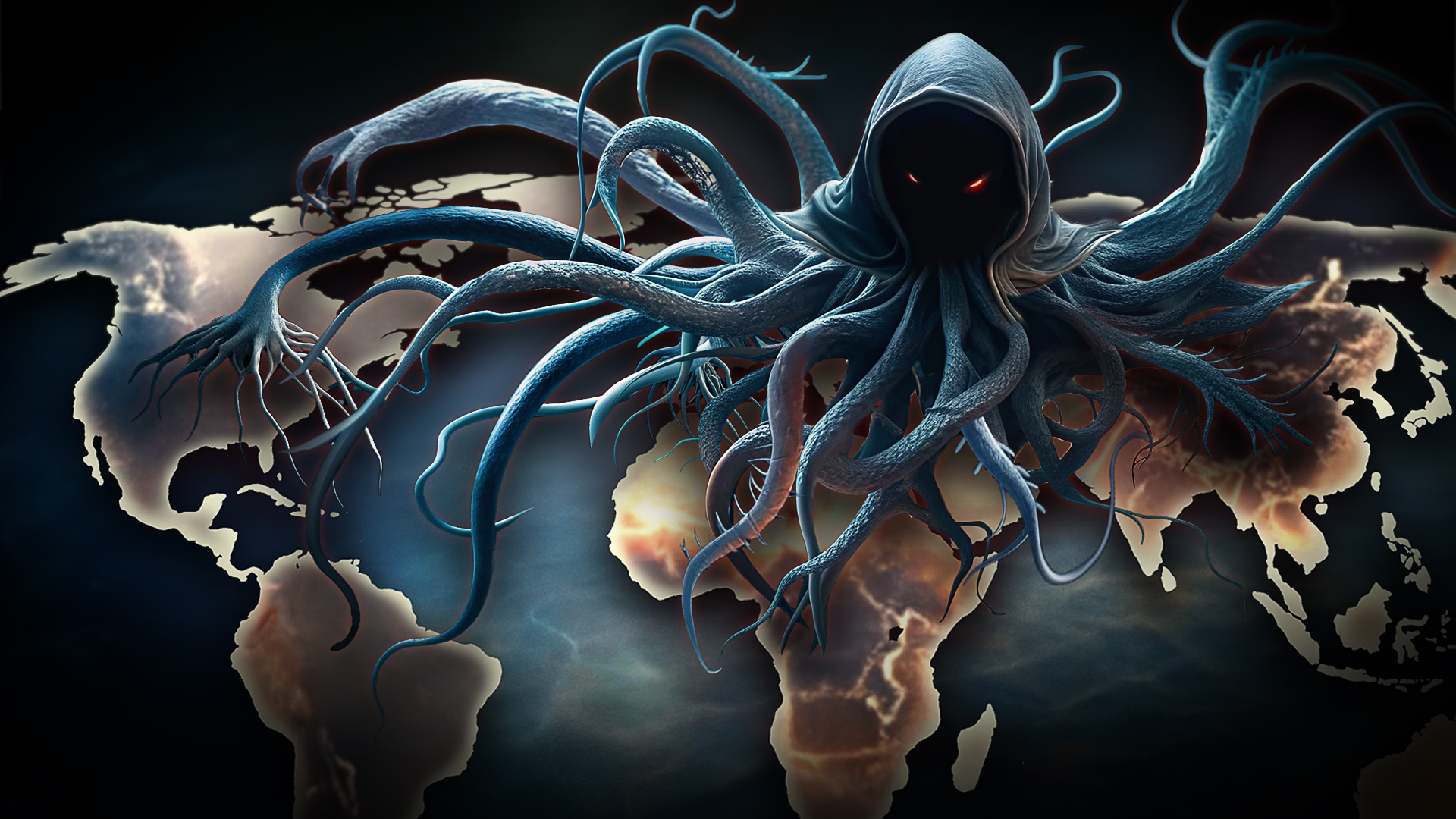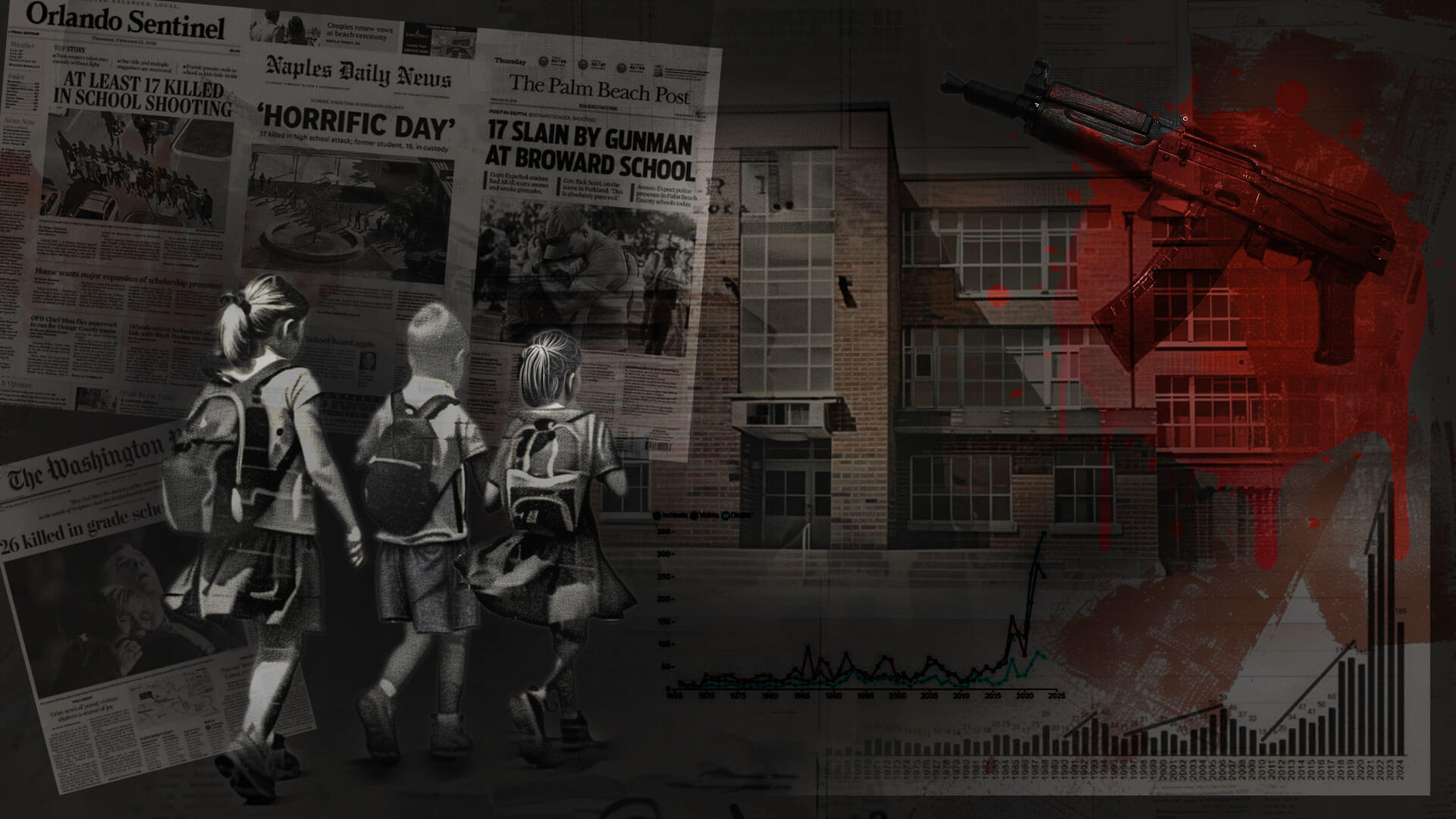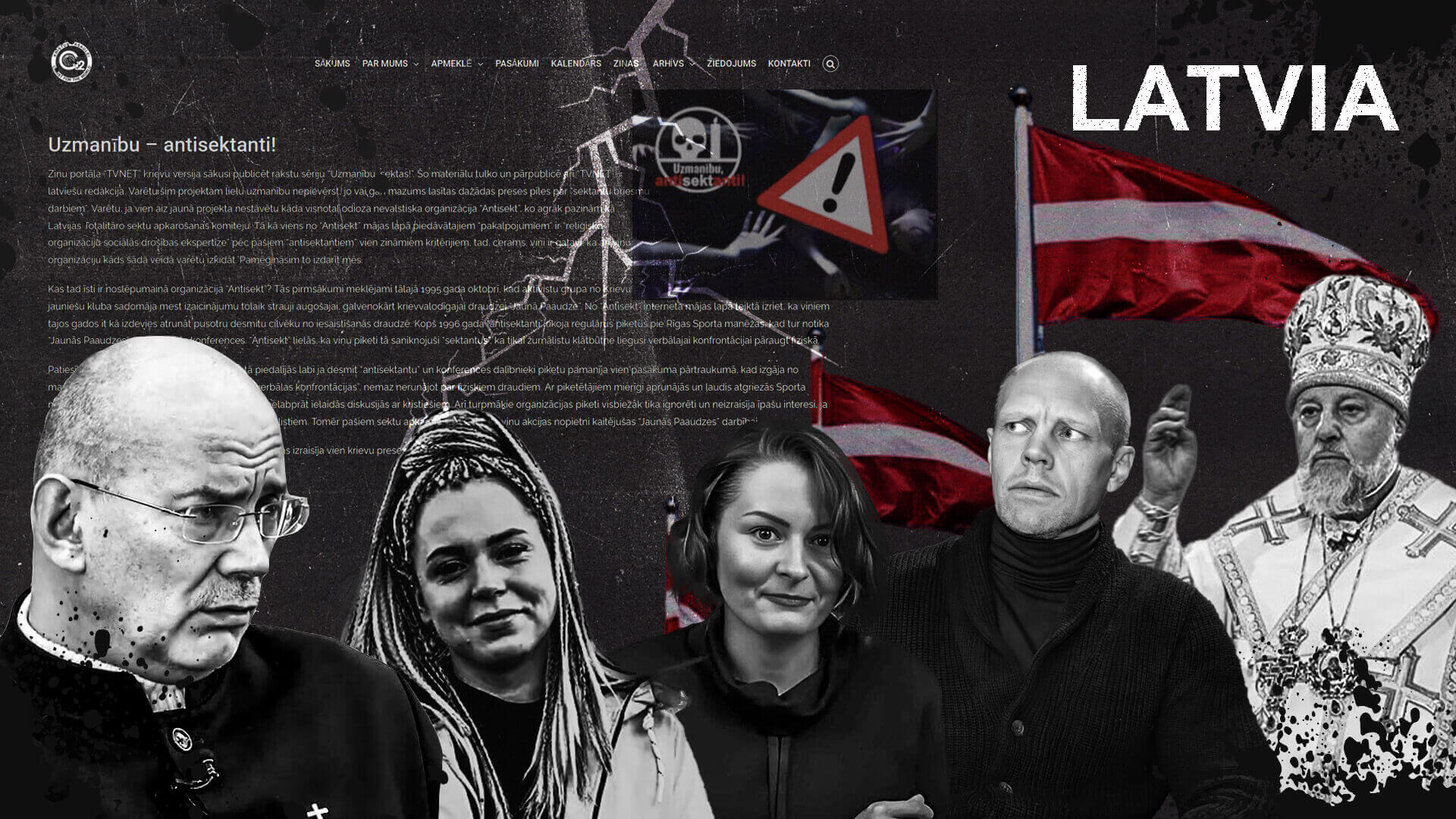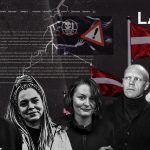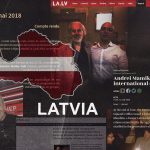What you’re doing will greatly enrage the enemy, and he will spread all sorts of outrageous slander ahead of you. He’ll do this to prevent people from encountering your work. Prejudices will push them away from you. Don’t be discouraged by this. Work as the Lord guides you. Those who need to will hear, respond, benefit themselves, and help you as well.
— From the book “Matushka” (“Mother”) by Archpriest Anatoly Garmayev
Foreword
As we studied the material on this topic, we came to the conclusion that anticultists do not care who to label. If the target deviates, even slightly, from the conventional “slavelike” paradigm of anticultism, Dvorkin’s inquisitorial department will surely come after them. It’s striking how skillfully and scrupulously they operate — willfully ignoring the monstrous crimes and distortions within the ROC itself, while directing their poisonous attention at those who are genuinely trying to bring positive change to the Church and sincerely serve both people and God. One such example was covered in the previous section on the case of the Transfiguration Brotherhood of Georgy Kochetkov.
In this article, we will examine another similar case — the persecution and dehumanization of the distinguished educator and priest Anatoly Garmayev.
Garmayev and Others
Anatoly Garmayev was a well-known educator and clergyman who began his teaching career even before being ordained. In 1971, Anatoly graduated from the Moscow State Pedagogical Institute named after V.I. Lenin with a degree in biology and chemistry. He entered a postgraduate training program at the USSR Academy of Medical Sciences and began working at a school — first as a teacher, then as deputy director for educational work. Garmayev organized the Club of Young Botanists and Zoologists at his school. His exceptional teaching talent was recognized not only by colleagues but also by students, who grew very attached to him.
They spent much of their free time together, conducting biology experiments, going on hikes, and expeditions. But in addition to teaching his subject, Garmayev would speak with students about higher moral values, love, and God — conversations that ran counter to the rigid state policy of atheism that prevailed at the time.
From the recollections of one of Garmayev’s students:
“I first read about him in a feature article published sometime in the early ’70s in the popular Literaturnaya Gazeta (“Literature Newspaper”). The article was titled: ‘Garmayev and Others.’ It was a story of a film by the same name, part of a documentary series about outstanding contemporary educators. The film was banned from airing at the last moment. The scandal was further fueled by the fact that the TV guide had already been published, and no reason was given for the sudden change.
When, after a widespread media campaign in support of the film, it was finally shown on television, the reasons for the ban became clear to everyone. The film told the story of a young teacher whose charm, intellect, and moral integrity won the love of his students — and, at the same time, provoked hatred from the rigid bureaucratic machine of ‘public education.’ The teacher was expelled from the school…
When I had the chance to meet this man a few years later, I found that the film’s airing and the emotional reaction it stirred in the press had in no way put an end to the persecution of the teacher. If anything, it had only intensified.” 1
During the perestroika era, he was once again dismissed “for immoral behavior.” His supposed immorality consisted in the fact that he engaged in spiritual and moral enlightenment:
“In the summer family camp he organized, children were frequently seen… wearing crosses around their necks!!! A corresponding report to the authorities was filed, and a full investigation was launched, during which it became evident that the camp indeed had a religious atmosphere…
The camp was immediately shut down, and the educator, who dared to build a way of life there according to eternal moral commandments, was dismissed for ‘immoral behavior’… The camp director had to take a job as a librarian at the Theological Academy and return to studying the writings of the holy fathers…”1
Garmayev spent three years working as a librarian at the Moscow Theological Academy before he headed the Scientific and Practical Laboratory of Moral Psychology and Pedagogy at the Innovative Association of the USSR Academy of Sciences.
His work with college students began with a youth school of communication, which later evolved into parenting courses focused on childrearing and marriage. These courses were held for several years in response to participants’ requests. Eventually, they led to the formation of a Moscow-based family club that brought together people from across the city. The youth school primarily focused on developing communication skills. The course material was later compiled into two books — “Finding Oneself” and “The Psychopathic Circle in the Family.” Archpriest Evmeny (Piristy) insisted that these books be published unchanged, preserving the style and structure of the original lectures.
From the recollections of one of Garmayev’s students:
“For almost two years, every Saturday or Sunday, we met for the Garmayev’s classes in a shabby little room of a run-down Moscow housing office, beneath the portraits of ever-changing communist leaders. To work. And the work was to make our lazy, fearful, miserable souls to labor; not everyone could handle that. The classes lasted five to six hours, sometimes longer. There was even homework: to keep a diary of your passions.” 1
Anatoly Garmayev described his approach as “moral psychology” — a discipline that studies human psychology through the lens of moral development, focusing on inner transformation and the harmony between words and actions.
The beginning of the religious path
Anatoly Garmayev played a significant role in the development of Orthodox education in Russia. During the perestroika era, he became the director of the first full-time three-year courses in Orthodox church pedagogy and culture in the USSR, established under the Department of Religious Education and Catechism of the Moscow Patriarchate.
A strange letter to the editor
In January 1994, one of the most popular and influential newspapers in Russia, Moskovsky Komsomolets, published a letter by someone named Lyubov Romanova, a reader from Podolsk. The letter was titled “Apostle of Darkness.”
“Even such a principle as ‘give, concede, forgive,’ Garmayev turns to his own advantage. He demands his students to ‘boldly surrender to humility’ and achieves blind obedience from them, thereby stripping away all their individuality. According to Garmayev, selfhood is the gravest vice.”
“Garmayev exploits people’s religious feelings and the most trendy modern topic — spirituality.”
“In the summer, Garmayev’s followers are advised to live in labor settlements. People are told they will be restoring churches, but in reality, their main activity is fieldwork on Garmayev’s plantation. The laboratory rents a collective farm field, and Garmayev — quite conveniently —u sed to work in biology before entering spiritual life. If in the past slaves were at least fed a bowl of gruel for work, Garmayev doesn’t even have to think about that — participants are required to bring their own food supplies!”
“Back in August 1992, I submitted all materials concerning Garmayev’s activities to the chairman of the Department of Religious Education and Catechism of the Moscow Patriarchate, Hegumen Ioann (Ekonomtsev). This false teacher was employed in his department. The chairman welcomed me most warmly, expressed solidarity and sympathy, and promised to deal with the culprit. At the same time, I was drowned in compliments, polite courtesies, flattering offers, and cheerful stories (those who’ve encountered him likely recognize his style). I’m a trusting person, and I was completely lulled by these gestures of goodwill and charmed by this official, who came across more like a socialite than a monk. So what did this socialite do during my tactful wait?”
“Well, as any lion would, he looked out for his own hide first — he quickly got rid of the troublemaking and now unwelcome staff member! It all came down to this: in February 1993, Garmayev was shipped off to another diocese; he was offered a position at the Pedagogical Department (!) of the Volgograd Theological Institute. And of course, Garmayev’s lab assistants immediately followed their idol (just like the Decembrists’ wives)! Thus, the center of the Garmayev movement was simply relocated, and THAT’S ALL!” 2
The letter was published in January 1994, just four months after the opening of the Center for Religious Studies in the name of Hieromartyr Irenaeus, Bishop of Lyons.
Everything about this letter is interesting, primarily because it is written in a typical anticultist style: guilt by association, quotes taken out of context, baseless accusations, and no supporting evidence. It gives the impression that the letter was written by Dvorkin himself.
At the very beginning, the author cites as evidence the widely circulated pseudoscientific theory about behavioral influence through the 25th frame. For some reason, “she” then transfers this association onto the work of Anatoly Garmayev. Based on just a few phrases taken out of context, she characterizes his entire teaching. She then offers unsupported claims about the cost of Garmayev’s courses and printed materials. The author stops at nothing — even going so far as to criticize his marital status: “married to a divorcée.” In the end, she presents herself as a concerned parent — another common anticultist tactic designed to exploit parents’ most inner feelings. This type of deliberate manipulation of public opinion through the media, using disinformation and unverifiable claims, is an informational terror attack — and, as we already know from “The IMPACT” documentary, a favorite tool of anticultists.
We don’t know how many such letters were published during those years. Even a single one, however, represents a direct attack not only on Garmayev but also on the entire Department of Religious Education and Catechism of the Moscow Patriarchate. Why anticultists needed this — still remains to be uncovered.
In any case, Garmayev was indeed sent away deep into the Russian provinces, far away from the “central administrative apparatus” of the ROC.
In contrast to the above claims, we’d like to cite the feedback from one of the participants of Garmayev’s summer camp:
“It took enormous effort, five years ago, to convince my wife to spend our vacation together with our two children at Garmayev’s summer camp on the Volga river. It’s hard to say now what scared her more — the complete lack of comfort (having to live in a tent for a month), the oddities of the pre-camp preparations (each person had to sew traditional Russian costumes for the entire family: ‘kosovorotkas’ and wide trousers for men and boys, and colorful sarafans for women and girls), or the semi-legal nature of our stay, the prayers in the bushes (as if KGB agents might be lurking nearby!)… Even one of these factors would have been enough for her to refuse outright, saying ‘never, no chance.’ But today she remembers that month in the forest on the Volga: those sleepless nights when either the rain flooded the tent or the mosquitoes tormented our ears with sadistic patience until dawn… weaving of bast shoes and baskets which at first, seemed absurd; the nightly stories from Russian history told in the Glade of the Ancestral Council; those two little toy boats released at night on the day of remembrance of the first Russian saints — the murdered princes Boris and Gleb — each carrying two burning candles above the black water down the Volga — those two living flames, visible for a long time and from far away, among the stars… And finally, those daily 20 minutes of ‘silent mode’ when, after the bell rang, no one dared to utter a word, not even in a whisper. Everyone moved carefully, trying not to make a sound; and the treetops above, usually enveloped in voices and various human concerns, suddenly became completely transparent to silence, light, and someone’s voiceless prayer, entwining with the shimmering of quivering leaves and cheerful birdsongs, and everyone occasionally lifted their heads and listened, and looked… Could anyone recall it all as anything other than a Celebration? ‘That was the brightest month of my life,’ — those are the actual words of my wife that I quote here. It overshadows even our honeymoon. There are things that really are sweeter than honey…” 3
Volgograd Diocese
We do not know what exactly influenced Garmayev’s decision to move to Volgograd, but one thing can be said with confidence — his arrival in the Volgograd diocese bore remarkable fruit.
Anatoly Garmayev became one of the founders of the Tsaritsyn Orthodox University and the Saint-Sergius Theological Institute. In the same year, he was ordained as a priest and continued his educational and pedagogical work, training new specialists in the field of religious education.
Volgograd Diocese. Anatoly Garmayev is in the center, next to Metropolitan Herman of Volgograd and Kamyshin.
In many cities across Russia and Ukraine, two-year correspondence courses in Orthodox pedagogy for parents were launched with the blessing of Metropolitan Herman of Volgograd and Kamyshin. These courses were based on the original teaching methodology of Archpriest Anatoly Garmayev.
The Volgograd diocese of the Russian Orthodox Church began publishing the Bulletin of Church Pedagogy. The journal was the official edition of the Volgograd St. Sergius Diocesan School of Orthodox Catechism and Church Pedagogy. Most of its content focused on family, practical, general, developmental, and corrective pedagogy. The initiative came from priest Anatoly Garmayev, who became the Bulletin’s chief editor. The journal had a circulation of 10,000 copies. 4
In January 2003, during the 11th International Christmas Educational Readings, on the second day of plenary sessions, Metropolitan Herman of Volgograd and Kamyshin delivered a report on Orthodox pedagogical schools in Volgograd.
“I would like to draw your attention,” he said, “to the small booklets on the presidium’s table — texts of lectures authored by the director of the St. Sergius School of Orthodox Catechism and Church Pedagogy, Anatoly Garmayev. It is probably from his experience that we should begin discussing Volgograd’s pedagogical schools. From the very beginning of educational efforts in the diocese, he has been one of the key organizers of higher church education and one of the founders of the Tsaritsyn Orthodox University. Today, his school plays an important role through its active work and good fruits.” 5
Young people from all over Russia came to the St. Sergius School. The system of everyday life which Father Anatoly created was somewhat reminiscent of the communal living of the early Christians.
Persecutions
In 1998, Alexander Shchipkov published the book “What Russia Believes In: A Course of Lectures.” 6 An entire page of it is devoted to Anatoly Garmayev. Notably, in the third edition (2002) of his book “Cult Studies. Totalitarian Sects” 7, Alexander Dvorkin refers to Shchipkov’s book eight times. It’s worth noting that Shchipkov served on the Expert Council under the Ministry of Justice from 2009 to 2015. Unsurprisingly, he and Dvorkin are personally acquainted. In the early days of the council, a broadcast aired on Radonezh Radio, hosted by Alexander Shchipkov, with guest Alexander Dvorkin. Here’s how the anticultist Dvorkin described his fellow experts:
“…I met many of the participants for the first time; some I already knew, like you and a number of others. These are all top-level experts, each a high-level specialist in his field…” 8
Here’s how Father Anatoly was described by Alexander Shchipkov in “What Russia Believes In”:
“Garmayev has been repeatedly accused of using Buddhist techniques (though we have no reliable evidence to support these accusations). Perhaps these accusations are a consequence of the fact that Garmayev is ethnically Buryat.”
“Some critics consider the Garmayev movement an intra-Orthodox sect. The basis for this is the cult of personality surrounding Garmayev within the community, the closed nature of his group, the holding of special meals for the initiated, the practice of dietary restrictions (‘an Orthodox Christian cannot eat meat’), and more.” 6
In 2001, at the 11th Theological Conference of the St. Tikhon’s Orthodox Theological Institute (PSTBI), Archpriest Dimitry Smirnov accused Priest Anatoly Garmayev of occultism.
The controversy centered around Garmayev’s recently published book “The Psychopathic Circle in the Family”. “There’s not a single constructive word in the book, there’s nothing positive. My advice is to confiscate all the copies and burn them. That would be the right thing to do,” suggested Dimitry Smirnov.
His criticism was supported by Alexander Dvorkin, who stated, “The author of the book has an occult paradigm of thinking.”
According to Anatoly Garmayev, expert in cult studies Dvorkin hasn’t read the book, and the excerpts he cited — where the author denounces occultism — were falsely presented as his apologetics.
The work, written 17 years earlier, was, according to Father Anatoly, intended for people outside the Church. The book was distributed through the underground press. “Reading it brought many people into the Church. More than forty of those who read it became priests, monks, or took on other forms of service within the Church,” Garmayev noted. 9
On September 5, 2003, at the Publishing Council of the Moscow Patriarchate, Alexander Dvorkin initiated the “First Readings for St. Irenaeus.” The event focused on discussing the teachings and practices of Orthodox priest Anatoly Garmayev. Here, we will present only some of the most striking quotes and analyze them. Alexander Dvorkin stated:
“…’alarming testimonies from people’ who had spent time in Father Anatoly’s community no longer allow us to delay an expert review of this phenomenon for signs of a totalitarian sect.”
It’s important to understand that there is always a certain group of people dissatisfied with the methods of one or another public figure. Yet for some reason, no one has ever conducted any investigation regarding the criminal activities of Dvorkin himself.
“All the participants in the discussion — Archpriests Alexiy Uminsky and Dimitry Smirnov, ans well as Deacon Mikhail Pershin — repeatedly emphasized that what was being discussed and examined was not the personality of Father Anatoly or his immediate pedagogical and psychological activities, but rather his theory, which has already gained significant traction within Orthodox circles.”
“Father Anatoly Garmayev himself was not present at the Readings, but the organizers emphasized in conclusion that they did not consider the discussion ‘behind his back’ unethical, since it focused not on the priest’s personality, but rather on ‘the phenomenon of church life, to which the Church must respond.’ As for Father Anatoly personally, the organizers of the discussion treat him ‘without irritation, with love’ and do not consider him ‘a conscious adherent of dark forces who would act intentionally.’”
This is a classic case of cognitive dissonance. On the one hand, they claim they are not discussing the individual but rather a “phenomenon.” Yet the entire discussion revolves around a concrete person and his views. The assurances of “love” and absence of irritation appear especially hypocritical against the backdrop of public discreditation. This combination of contradictory messages truly creates a sense of ambivalence — it’s unclear whether they are actually criticizing or justifying him — but in any case they are influencing the audience in a manipulative manner.
“A ‘deep concern’ regarding the content of this theory was expressed by the main speaker — Deacon Mikhail Pershin, a staff member of the Russian Orthodox Church’s Youth Department — who analyzed Father Anatoly’s well-known book, “The Psychopathic Circle in the Family”. According to Father Mikhail, the language of the book itself raises concern, as the author introduces a specialized system of terms and concepts — a ‘mixture of psychoanalytic and ascetic principles.’” 10
Notably, the leader of the anticult sect Alexander Dvorkin is himself no stranger to inventing terminology. It was he who introduced the concept of a “totalitarian sect” in 1993 and entrenched it in public discourse over the years. Thus, anticultists accuse their opponents of doing exactly what they themselves do, and, apparently, it doesn’t bother them at all.
“In Father Anatoly’s anthropology, the speaker saw a ‘shadow of Manichaeism’: a person is regarded as ‘a product of familial life, determined by familial psychopathy.’”
The “shadow of Manichaeism” comes off as a contrived, pseudo-intellectual construct. The speaker is trying to force a link to Manichaeism where it clearly doesn’t exist, just to lend philosophical weight to his accusations. In reality, it’s just a typical manipulation — creating a negative association through flashy terminology.
If you break down his statement logically, it’s nonsense: familial determinism has nothing to do with Manichaean dualism of light and darkness. Rather, it looks like a clumsy attempt at criticism cloaked in highbrow rhetoric.
“Father Mikhail identified a number of features in the book that, in his view, shift Father Anatoly’s teaching closer to sectarianism. One such feature is the ‘creation of an enemy image,’ in this case, the mother as an ‘energy vampire.’ (This point, according to Father Mikhail, resembles the teachings of the Bogorodichny Center leader Ioann Bereslavsky.)”
What we’re seeing here is a classic example of manipulation — guilt by association. Anticultists link the mentioned term to a previously discredited leader of the Bogorodichny Center solely based on a single phrasing overlap.
Archpriest Alexey Uminsky, a longtime collaborator with the Center for Religious Studies in the name of Hieromartyr Irenaeus, Bishop of Lyons and a former schoolteacher, emphasized the “undeniable personal teaching talent” of Father Anatoly Garmayev. However, in Uminsky’s view, “his books do not lead to Christ but only to Gamayev himself.” According to him, Father Anatoly’s thinking is “occult,” and his theory represents a “mysterious esoteric doctrine.” He noted that while calling his teaching “Christian pedagogy,” the Orthodox priest never actually cites the Gospel. Instead, he uses his teaching talent and clerical status to “control people”
Anticultists often rely on baseless claims as a tool of stigmatization. Terms like “occult thinking,” “mysterious esoteric doctrine,” and “control of people” are intended to provoke fear and outrage in readers. Yet each of these phrases requires clear substantiation, specific examples, and comparisons with actual occult teachings. In this case, what we’re dealing with is just empty rhetoric, aimed at an audience that won’t ask inconvenient questions and will accept the statements for granted, relying solely on the “authority” of the anticultist.
“According to Father Dmitry Smirnov, the books in question can serve as a kind of test: mentally healthy individuals find them incomprehensible, and to them, the “murky futility” of the teaching is self-evident. Those who become followers, he says, are people with “viscous minds,” and within their circle, a “malignant psychopathological process is exacerbating.” For this reason, Father Dmitry believes Father Anatoly’s work is “undeniably harmful,” something he has repeatedly told the creator of “moral psychology” himself, who “refuses to accept any criticism directed at him.”
Using terms like “viscous minds” and “malignant psychopathological process” to describe people who hold certain worldviews is not only offensive but also manipulative. It portrays them as inherently defective or inferior, while creating a convenient excuse for their discrimination or forced “treatment.”
In doing so, Dmitry Smirnov went even further. He moved from stigmatizing Garmayev personally to targeting his readers, followers, friends, and colleagues — in other words, anyone who shares Garmayev’s views. Smirnov continued:
“If the Sergiev School turns out to be ‘not spiritual but occult-rational,’ it will certainly be ‘shut down.’” 10
This is a typical example of rhetorical intimidation and power play. Smirnov’s assertion about possibly “shutting down” the educational institution gives listeners the impression that the matter has already been decided. It’s a manipulative tactic, meant to shape a desired attitude toward the target of criticism. Within the broader discussion, this clearly demonstrates the typical anticultist approach — accusations without evidence and attempts to intimidate the audience so it doesn’t ask too many questions.
Garmayev’s response to the report delivered at the “Readings for St. Irenaeus”
All of this criticism and harassment of Father Anatoly reverberated through society. Anonymous users spread links to this press release on numerous forums like wildfire. Naturally, Garmayev had to respond. Below are excerpts from Father Anatoly’s open reply.
“All the criticism voiced at the ‘Readings for St. Irenaeus’ is based on just one of my seven books — ‘The Psychopathic Circle in the Family’… The others, meaning the later period of my work in Volgograd, are completely ignored. All conclusions are drawn from just that one book and then extended and applied to all others as well, thus naturally creating confusion and imposing a uniform judgement over the entire length of my life’s ministry, as though it has always been the same and unchanging during all periods…”
“When Deacon Mikhail Pershin uses the phrase ‘a specialized system of terms and concepts,’ he directly implies that their origin is secretly occult. If one becomes infected with the “image of the enemy” who supposedly stands behind me and dictates the books, then the impression of this “specialized system of terms” will be the inevitable consequence. But I have absolutely nothing to do with either that infection or that impression.
“…Father Anatoly Uminsky claims that, ‘while calling his teaching Christian pedagogy, the Orthodox priest never cites the Gospel. Instead, he uses his teaching talent and clerical status to ‘control people.’ But at the time those lectures were given, ‘citing the Gospel’ was simply impossible. In the second edition of the book, the main text remained unchanged, but new postscripts by the priest were added. These include Gospel content, many words from the apostolic letters, and a wealth of content from the writings of the Church Fathers. To see this for yourself, you’d actually have to read the book, not just pull out quotes and twist them into something they’re not” .
“The final words in the ‘Moscow Church Bulletin’ article come from Archpriest Dimitry Smirnov. He says, ‘At the core of Father Anatoly’s teaching are his own personal experiences, presented as immutable laws.’ But they are not personal — they are the result of many years of working with children, teens, and their families. Of course, there is some personal experience involved. But any educator has the right to share their experience — whether in writing or speaking — along with their observations and conclusions. That said, I’ve never created any separate teaching.”
“Father Dmitry ‘equated the communal lifestyle practiced by Father Anatoly to similar phenomena in the community of Father Georgy Kochetkov.’ I have no idea how Father Dmitry would know anything about our practice. He has never visited us and never discussed our practice with us.”
“Nevertheless, the main content of the book is clearly found valuable by people, which is why the book was reprinted six times by different publishers, with each run selling out. And the school continues to receive dozens of letters expressing sincere gratitude and asking how to obtain a copy. However, it seems there’s nothing good about the book at all for the participants in the ‘Readings for St. Irenaeus.’ All the accusations stem from a single assumption that the book was written by an occult sectarian with a suppressive personality, and all efforts are aimed at proving that assumption.” 11
Fr. Anatoly Garmayev’s answers couldn’t possibly satisfy Alexander Dvorkin and his followers because the very framework of anticult rhetoric doesn’t allow for self-defense or constructive dialogue. In smear campaigns like these, only one point of view is permissible — the one promoted by Dvorkin and his circle.
An analysis of anticult methods shows that their strategy is based on stigmatizing and discrediting opponents using distorted or unreliable information. The activity of anticultists grounds on unconditional submission to Dvorkin’s authority, which, in fact, forms a closed hierarchical structure that exhibits the traits of a totalitarian sect within the ROC.
The smear campaign continues
On February 18, 2004, a letter by Yevgeny Mavrodiev surfaced. Who he is and how he is connected to Dvorkin’s anticult sect remains unclear. As Mavrodiev stated in the letter, he worked in the Volgograd diocese for several years. However, his letter was posted on Dvorkin’s website iriney.ru and was quickly spread across the Internet.
The writing style mirrors Alexander Dvorkin’s rhetoric, including characteristic manipulation techniques, the spread of unverified claims, and subjective judgments. It’s notable that anticultists place no limits on the tools they use for discreditation — even texts of questionable quality are fair game. Here are a few excerpts that illustrate this approach:
“One gets the impression that Father Garmayev couldn’t care less about the serious accusations brought against him by Alexander Dvorkin and several other respected priests” .
“Humbless of Fr. Anatoly himself can be seen from his reaction to the resolutions from the Irenaeus’s Readings: as a Christian supposedly should, Garmayev wrote multi-page justifications for himself.”
“Let’s take a look at the justification texts by Father Anatoly, who clearly has no intention of ending his fruitful pedagogical activity…”
Here, Mavrodiev is sincerely surprised that Garmayev had the audacity to respond to the stigmatization and slander coming from the “respected gentlemen” of Dvorkin’s totalitarian sect. What follows is an entire section of gossip that begins as follows:
“The statements below were taken from conversations with former students of Garmayev’s school. I don’t mean to slander anyone, but the disturbing facts demand thorough investigation because we are talking about children who are coming to Christ…”
This section referencing “conversations with former students,” reads more like rumor devoid of objective proof or factual grounding. What is more, there’s no way to verify the authenticity of these accounts or identify their sources, since no names or concrete references are given. It’s worth noting that even if such opinions existed, their use reflects a common tactic employed by anticultists. Anticultists often rely on testimonials from individuals who initially engaged deeply with a community, were active participants, and then left it for personal reasons. These defectors become convenient tools for shaping a negative public image of the organization, community, its members, and its leaders.
“Many simply ran away from that school, unable to endure the months of torture.”
“Gramayev ruined lots of prospective marriages: separating lovers and ‘re-blessing’ marriages was his favorite pastime.”
Even ordinary PE lessons at the school were portrayed by Mavrodiev as violence against students and a torture system.
“The systems of corporal punishment varied. Besides the classic forms, there was also the ‘duck walk’ (the Garmayev’s term), where students (including women) were forced to ‘humble themselves’ by goose-stepping up and down the stairs. The ‘duck walk’ was especially common for academic problems — if a student got a C, they had to goose-step the staircase three times…” 12
Here’s how that was commented by Alexey Evstigneev, a former student of Garmayev’s and a staff member at the St. Sergius School:
“To an outside observer, goose-stepping in a church school might seem absurd. But for us, students at the time — and even now — it didn’t seem that way. Why? Because for a young person with a developing body, physical activity is vital. A lack of muscle engagement needs to be compensated somehow. That’s why we had a 40-minute exercise break at a nearby stadium (or indoors on bad weather days) scheduled before lunch. Among many different muscle group exercises was the ‘duck walk,’ including up and down the stairs. Believe me, Yevgeny Vladimirovich [Mavrodiev], after sitting through the classes, a 30-minute warm-up was actually a joy. We, the students, recognized its value and never saw it as physical abuse. I think it must be obvious for you too.”13
According to the logic of anticultists, any educational institution with disciplinary rules and physical training standards can be labeled a “totalitarian sect” with a system of punishments. However, if you follow that logic, even the Russian Orthodox Church would fall under the same definition as it operates under a strict system of obediences, and monks are required to unquestioningly submit to their archbishops. We will leave this aspect without detailed review, although much information on this topic has recently come to light. Nevertheless, anticultists are not interested in cases of abuse of power by Orthodox archbishops involved in financial fraud, sexual scandals, and acts of violence.
Then, as is typical with anticultist rhetoric, Mavrodiev resorts to his favorite tool: guilt by association:
“You can spot Garmayev’s followers in the diocese immediately — they’re all the same. The first sign is a distinctive quiet voice and a peculiar ingratiating look that somehow reminds you of the Krishna followers… I’ve seen many of Garmaev’s followers, and most were troubling to behold. People were blindly devoted to their ‘leader’ and completely dependent…”
And of course, no anticultist slander would be complete without invoking the cult of personality. After all, a “totalitarian sect” can’t exist without a strong leader controlling the actions of “his adherents”:
“Since this whole ascetic practice revolves around constant, detailed confessions to Father Anatoly, his spiritual children are completely dependent on him, to the point of being unable, pardon me, to go to the bathroom without Father Anatoly’s blessing.”
Insults, personal attacks, and humiliation — as we’ve already noted — are tools used to suppress dissent. This is confirmed by a short excerpt from the letter:
“…although here in Russia — besides Father Garmayev — there are other good and truly humble Christian educators whose experience and work ought to be referenced… Garmayev, in fact, doesn’t cite not only his contemporaries or Western authors, but not even pre-revolutionary Orthodox pedagogues of Russia — why, one wonders, can’t he read Russian?”
“…we’re talking about an arrogant scribbler [Garmayev], a pseudoscientific fraud who lacks the most basic foundation in scholarly pedagogy and doesn’t even have a minimally required background in secular education — and yet, somehow, he humbly decided that he can lead children to the Kingdom of Heaven…”
At the end of the letter, like in any informational terror attack orchestrated by anticultists, we get to the very bottom of why it was created:
“I believe it is the duty of all Orthodox Christians to support Alexander Dvorkin’s initiative and expose the organization led by Father Garmayev, which dares to call itself an Orthodox school.” 12
This perfectly illustrates the nature of Dvorkin’s totalitarian sect, where his authority is never questioned. In their worldview, being a true Christian means joining the battle against evil.
For more than a decade since the Readings for St. Irenaeus — where Anatoly Garmayev was publicly defamed — Dvorkin’s anticultist totalitarian sect has not ceased its persecution and dehumanization efforts, engaging “Orthodox psychologists” 14 and “Orthodox educators” to aid in their campaign.
In October 2005, a collection of articles was released by the Youth Department of the Smolensk Diocese as a supplement to the newspaper Orthodox Smolensk. Titled “The Teaching of Priest Anatoly Garmayev: Pedagogical Innovation, Mistake, or Delusion?”, the entire publication was devoted to criticizing the educational practices and books of Father Anatoly Garmayev. Contributors included familiar names: Dmitry Smirnov, Alexey Uminsky, Mikhail Pershin, Svyatoslav Khudovekov, Yevgeny Mavrodiev, and Orthodox psychologist Larisa Shekhovtsova.
In 2006, this effort continued with a brochure titled “Nocuous Round Dance”, published anonymously by a group of Orthodox pedagogues:
“At times, it seems that ‘Garmayev-style pedagogy’ is like a gas gangrene in the body of our Russia, exhausted by perestroika and endless reforms. Where did this wound come from, and how can we stop the spread of this spiritual disease that is devouring people’s souls?” 15

In a 2013 broadcast on the “Soyuz” TV channel, to the question, “What can you say about the teachings and community of Priest Anatoly Garmayev,” Dmitry Smirnov responded with the following:
“My opinion is negative. I wouldn’t advise anyone to go to him or listen to what he has to say. If you want the short version: what he says is not the teaching of the Orthodox Church — it’s occult nonsense. I’ve known him for many years and tried to influence him, but it turned out to be impossible. He stubbornly sticks to his views.”
Smirnov was a regular guest on the “Conversations with the Priest” program on the “Soyuz” TV channel. Here’s how the conversation continued:
Archpriest Alexander Berezovsky:
“A kind of personal interpretation of Orthodoxy…”
Archpriest Dmitry Smirnov:
“It’s not personal. You can’t call an occult worldview personal — after all, he wasn’t the one to invent occultism. In contrast, Father Georgy Kochetkov indeed has a personal worldview. He came up with that system himself. But Garmayev took everything prepackaged. Sure, there are traces of his personality in there, but everything is just so trivial…”
Archpriest Alexander Berezovsky:
“So, it’s dangerous like occultism.”
Archpriest Dmitry Smirnov:
“Yes, and not only that, but I didn’t want to talk about it on air. If things get serious, I’ll speak out, I won’t be afraid. If he’s listening — let him hear this. And if someone tells him — let him know” 16.
Back in 2003, during the Readings for St. Irenaeus, Smirnov had already declared that if Garmayev’s Saint Sergius School turned out to be “not spiritual but occult-rationalist,” it would definitely be shut down. However, ten years of efforts to discredit Anatoly Garmayev failed to achieve the outcome Dvorkin’s followers were aiming for — the Saint Sergius School continued to operate, grow, and attract new students.
The scandal surrounding the parish and a tragic death
The story began with the tragic passing of Georgy Staroverov in 2012. The young man, who had previously engaged in ballroom dancing, began attending the parish led by Father Anatoly Garmayev, located on the grounds of the former summer camp “Rodnichok” (“Springlet”).


According to Georgy’s mother, her son was drawn into a sect:
“Georgy lived, fulfilling all the requirements of Anatoly Garmayev, just like others. He created a very real sect. It’s slavery; people there are drugged, deprived of their will. Their consciousness gets altered. There were both adults and children involved. Behind the priest’s house in the ravine, there is an illegal graveyard. Buried there are men, women, and children; I believe they were killed.” 17
After Georgy’s unexpected death, his mother began to suspect murder. She claimed that Anatoly Garmayev not only drew Georgy into the sect but also forcibly brought him to the settlement of Otrada, where he held him captive and forced him to work as a cattleman, after which he killed him.

Source: “bloknot-volgograd.ru”
Text of the statement:
To the Prosecutor of the Volgograd Region
From Zakharova Natalia Ivanovna
And Staroverov Ivan Semenovich
Ilovlya, Budennogo St., 36
Statement
I request that you initiate a criminal case under Article 105 of the Criminal Code of the Russian Federation against Anatoly Tsedenovich Garmayev for the murder of our son, Staroverov Georgy Ivanovich, born on September 14, 1985, on February 6, 2012.
The date of death has been falsified. All investigative materials have been fabricated. The photos from the exhumation show knife (penetrating) wounds. He was brutally murdered and tortured. There is no heart in the body.
We suspect that there is organ trafficking happening in the sect of Priest Garmayev. There is a graveyard behind Garmayev’s house. Our son was not killed alone.
I ask you to investigate the Svetloyarsk interdistrict investigative department and the Svetloyarsk police regarding this matter.
Garmayev administers neuroleptics to people, deprives them of their will, alters their consciousness, and removes their critical thinking. This is a dangerous sect; it is true slavery.
Signature: Zakharova
The case materials contain a notification from the forensic expert stating that the examination of Staroverov’s body was not completed due to the complexity of the case. However, this document was written on the reverse side of another conclusion regarding a completely different body, which had multiple bodily injuries. Essentially, the expert used an already written page as a draft.
This gross negligence by the expert caused confusion and gave Staroverov’s mother grounds for new suspicions and accusations.
After further investigations and a re-examination of Staroverov’s body, it was revealed that he died of acute heart failure. Georgy’s mother claimed that her son had no heart problems and accused Garmayev of organ trafficking.
The Investigative Committee refused to initiate a criminal case, finding no evidence to support the mother’s suspicions. Here’s a comment from a staff member of the investigative department:
“I fully understand the mother of the deceased man. She was in shock from what happened. She did not agree with her son’s joining the Russian Orthodox Church. She was extremely upset. She experienced severe depression. Indeed, a horrible error occurred during the autopsy. This understandably raised suspicions for the mother. However, a multitude of checks were conducted on this matter by various individuals and organizations. No signs of violent death were found on the body. The issue was under the personal control of the head of the department. There were no leads confirming a criminal nature of the death. There were only accusations and assumptions from the mother, who was negatively predisposed toward the church to which her son dedicated almost all his time. Another matter is that the Volgograd resident (deceased Staroverov) rejected a secular lifestyle, but according to our laws, that is his personal right. For many years, the woman has been trying to get a criminal case initiated. But there are simply no grounds for that.” 17
On March 18, 2021, Natalia Zakharova again appealed to the Investigative Committee, demanding the closure of the parish. On the same day, Anatoly Garmayev was found dead.

Online Slander Against Priest Garmayev
The question arises: where could Natalia get the information regarding “a sect, organ trafficking, slave labor involving people deprived of their will, exposure to drugs, or an illegal cemetery” if all none of this were confirmed during the Investigative Committee’s checks? Here’s what we discovered.
In the Russian social network “Vkontakte” there is a group “Beware – Anatoly Garmayev’s sect!” It was created on March 28, 2012, a month after Georgy Staroverov’s death. This group compiled all the “works” of anticultists aimed at stigmatizing Garmayev over the years, as well as rumors, gossip, and blatant slander against the priest. While the group’s content has since been hidden by its owner, some traces of it still remain on the Internet.
Natalia Zakharova, the mother of Georgy Staroverov, was a member of this group and used it as a source for her later accusations and defamation campaign against Priest Anatoly Garmayev.
In her posts, Staroverov’s mother asked the group’s organizer to contact her. One can only imagine what she could hear from the group admin during their personal conversations.
This group was a real “mud bath” where the organizers didn’t stop at the standard “sectarian” slander, but let their warped fantasy run wild.
They discussed Garmayev’s “occult” past:
However, there were also sincere, positive testimonials from people who personally knew the priest, had visited his community, and participated in his events.
The group had 24 members, with only five active participants. Any reasonable comment that didn’t align with the group’s narrative was quickly attacked by anticultist pawns, who would reference the so-called “indisputable authorities” — Alexander Dvorkin, Dmitry Smirnov, Alexey Osipov — and of course, Dvorkin’s website, iriney.ru.
It’s worth noting that on “VK” social network, there is also a community of people who were genuinely inspired by Anatoly Garmayev’s work. That community is vastly larger than the small circle of haters. Upon reviewing Garmayev’s group, we found no trace of the allegations made by the anticultists.
The coordinated long-term harassment organized by Dvorkin’s totalitarian sect reached its goal – Anatoly Garmayev’s heart simply failed.
Moreover, Dvorkin demonstrated a special cynicism towards Garmayev’s death. On his website iriney.ru, he republished an article about his death 18, which continued to slander Garmayev even after his death.
Dvorkin’s repost of this article is not merely an act of manipulation; it is a blatant fabrication of so-called “evidence” against Anatoly Garmayev. The article was an abridged version of the original story about Garmayev and Georgy Staroverov, which we discussed earlier. The full article, published on a Volgograd news portal, offered a comprehensive account of the events — including not only the unsubstantiated accusations made by Georgy’s mother, Natalia Zakharova, but also the official response from the Investigative Committee, which refuted them.
However, Dvorkin deliberately posted a shortened version on his website, stripping it of all key elements that exonerated Garmayev. As a result, his audience was presented with a distorted, false narrative that reinforced the ongoing smear campaign Dvorkin had been waging against Garmayev for years. This move clearly demonstrates that Dvorkin is not interested in truth — only in the opportunity to destroy the man he has persecuted for decades.
Dvorkin’s repost was his attempt to justify the years-long harassment of Anatoly Garmayev. Even though Garmayev died under unclear circumstances, Dvorkin has shown no compassion, no neutrality — only continued vilification, celebrating Garmayev’s death as “proof” that he had been right all along.
This level of cruelty and manipulation of public opinion goes beyond simple hypocrisy — it reveals the cruel disingenuousness with which Dvorkin and his loyal followers stigmatize and destroy people’s lives. Meanwhile, it is entirely consistent behavior for a man who infiltrated the Orthodox Church, created a totalitarian sect there, and continues to undermine Orthodoxy from within. It only emphasizes his true goal.
And yet the question remains: can the priests of the Russian Orthodox Church who still listen to Dvorkin truly see such behavior as even remotely Christian?
Conclusion
In 1998, the first August Pedagogical Council was held in Otrada. This was a mid-year section of the International Christmas Educational Readings, gathering 40–50 participants annually from cities across Russia and neighboring countries. These August councils, organized by Father Anatoly, were attended by bishops, priests, active laypeople, leaders, and instructors of catechetical courses, Orthodox gymnasiums, and Sunday schools from various dioceses. Participants eagerly engaged with the Saint Sergius School’s methods for catechization and church integration.
From the reflections of Bishop Ignaty, then Bishop of Petropavlovsk and Kamchatka:
“After spending seven days at the August Council, immersing myself in the community life of the Saint Sergius School, and engaging in the intense, deeply ecclesial work proposed by Father Anatoly, I reconnected with the spiritual state of the ‘inner man’ I had once experienced so profoundly before my episcopal ministry. I was reminded of the need to nurture that inner life. I felt a renewed sense of responsibility for the spiritual upbringing of our youth. The Lord deepened the bond between my heart and Himself, and I came to understand anew what it means to act in truth. The Lord slightly lifted the veil over what a bishop’s service in the Church should be. Here in ‘Orthodox Otrada,’ there is a unique opportunity to personally experience the depth, fullness, and content of communal church life.” 5
Anatoly Garmayev consistently preached the importance of spiritual and moral growth, urging people to strive toward God and self-perfection. It was precisely this position that placed him in direct conflict with anticultist ideology, which views freethinking as a threat. Anticultists aim to produce passive conformists — people who unquestioningly follow directives and never step outside prescribed boundaries.
It was this cult of subordination planted among the clergy that led Russia to a deep crisis. In contrast, Father Anatoly made a significant contribution to the development of Orthodox pedagogy, enriching religious education with scientific approaches. His life and work encouraged others to think freely, act with integrity, and uphold sincere faith in both God and fellow human beings.
Such spiritual liberty and genuine devotion proved unacceptable to Alexander Dvorkin’s totalitarian sect, which thrives on suppressing every trace of independent thinking.
To be continued…
Sources:
1. http://www.moscowuniversityclub.ru/home.asp?artId=4899
2. https://scepsis.net/library/id_2714.html
3. http://www.moscowuniversityclub.ru/home.asp?artId=4899
4. https://ortho-rus.com/articles/beloe-duhovenstvo-7762.html
5. https://vk.com/@uklad_otrada-svetloi-pamyati-prot-anatoliya-Garmayeva
6. https://www.lib.ru/POLITOLOG/SHIPKOW/religion.txt
7. https://pravbeseda.ru/library/index.php?page=book&id=931
8. https://radonezh.ru/text/aleksandr-dvorkin-v-programme-aleksandra-schipkova-chast-1-54364.html
9. https://www.newsru.com/religy/06feb2001/occultus.html
10. https://ruskline.ru/monitoring_smi/2003/09/09/v_izdatel_skom_sovete_moskovskoj_patriarhii_proshli_i_irineevskie_chteniya
11. https://xpa-spb.ru/libr/Garmayev/nekotorye.html
12. https://web.archive.org/web/20080106141010/http://iriney.ru/polemic/g005.htm
13. http://www.cirota.ru/forum/view.php?subj=23831
14. https://xpa-spb.ru/libr/Shehovcova/razmyshleniya-Garmayeva.html
15. http://www.lv-surova.ru/horovod.htm
16. https://www.youtube.com/watch?v=5CPFl2x9vAE
17. https://bloknot-volgograd.ru/news/soobshchili-o-sozdanii-sekty-i-ubiystvakh-generalu-1324780
18. https://iriney.ru/iskazhenie-pravoslaviya-i-okolopravoslavnyie-sektyi/uchenie-i-praktika-svyashhennika-anatoliya-Garmayeva/nastoyatelya-xrama-v-volgograde-nashli-mertvyim-posle-gromkix-obvinenij.html

